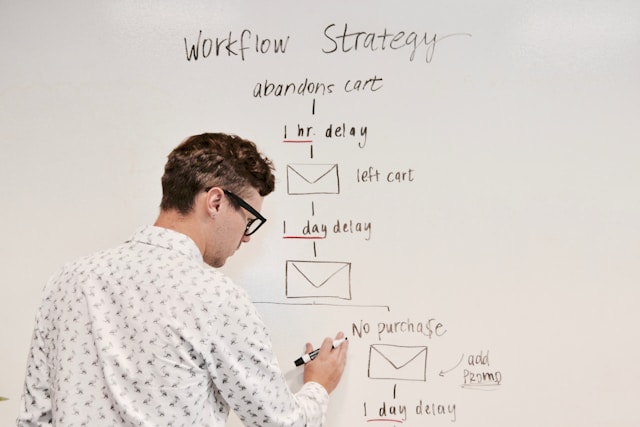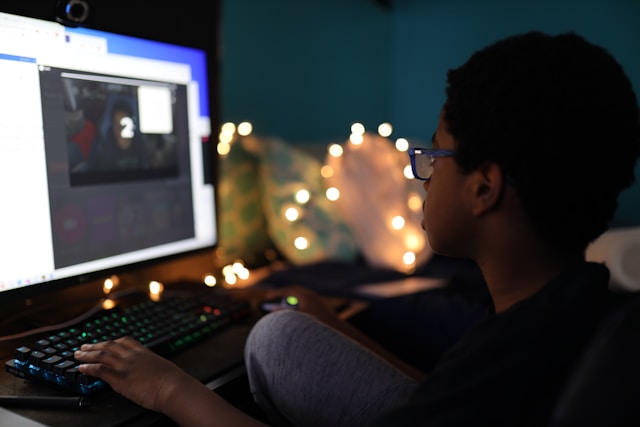As businesses go digital, a lot of brands are looking for experts to build their websites and with the right skills, you can become a freelance web designer and position yourself for these jobs.
Like most high demand skills, learning web design positions you for a lot of opportunities both locally and internationally. And you can leverage your skills to work in diverse industries.
But, starting and building a successful career as a freelance web designer is not a walk in the park. As a beginner, you’ll need a lot of skills to navigate your way to success.
In this guide, I’ll be sharing with you some insights and steps you can take to start your journey as a web designer, regardless of your location and target industry.
Learn Web Design
Table of Contents
One of the first steps to become a freelance Web designer is to learn Web design. You need to learn the skills before you can become a professional web designer.
But, before you embark on learning this skill, you have to know exactly what you want. This is because there are levels to web designing and training targeted at different levels.
For example, the tools you’ll need to build websites using programs like PHP, JavaScript, Python etc. are quite different from what you’d use if you’re building with platforms like WordPress, Joomla and other content management systems.
So, you have to decide on this before you embark on your learning. Also, find out your overall goals. Are you looking to become a Web Designer in a few months, start making money and then build on your skills? Or do you want to become full stack before you start earning?
If your goal is the former then you have to choose a learning pathway that allows you to make money more easily. This can be the no-code pathway or using some beginner friendly programs and frameworks with shorter learning time frames including HTML, CSS, JavaScript, WordPress etc.
If your goal is the latter, you’ll need to learn from the scratch and then build on all the necessary skills over a longer period of time.
Whatever learning pathway you choose, it is important you go for a pathway that aligns with your goals if you want to achieve them.
Practice your Skills
Web designing is a highly advanced skill that needs a level of consistent practice to build the versatility that will keep you ahead of the competition.
This means that after learning your skills, you’ll have to put it to use immediately by practicing with it and using it to build actual websites. This is important.
As someone aspiring to become a freelance web designer, you have to keep in mind there is a lot of competition out there and to beat your competitors, you have to be at the top of your game.
So, start Practicing as soon as you’re done learning. Build websites based on your training. Create demo projects and use these to test your skills while gathering more experience.
In addition to that, take on other kinds of projects outside the ones you’re familiar with to further extend your mastery and build confidence. This will help you as you get set to launch your brand.
Create a Brand
You’ve just finished learning, but before you launch out, you need a brand that separates you from other website designers.
Usually, the first steps to create your brand starts with identifying a brand name that aligns with your goals and target audience and then going ahead to set up the brand.
Since the goal is to become a freelance web designer, you can start with choosing a brand name that aligns with this.
If you’re building for a personal brand, you can build your brand around your personal name to create trust but if your goal is to build a company or a brand targeted at professional entities, you can consider choosing a business name distinct from your own name.
After that, go ahead and design the other aspects of your brand around the brand name you just created.
While creating the other aspects of your brand like brand colours, logo, brand tone of voice etc, pay attention to ensure that these also align with your brand goals, your brand name and audience expectations.
Create a Plan
How do you plan to become a freelance web designer successfully? This is the section that you’ll get to answer this question to the best of your knowledge.
Although when I started as a web designer some years ago, I did not have any business plan because I did not know how that works, I do not advocate that you launch out without a plan because this will delay your growth.

As someone seeking to build success in a tightly contested industry, you have to hit the ground running from the get go. So you have to start out with a business plan that outlines your success pathway.
Your business plan should be able to answer questions like: “How do you plan to get your first client? How long will it take for you to have the first 5 clients, and when do you think you can make your first six figures?” Etc.
What this does for you is that it helps you to align your strategies in a focused direction aimed at achieving a specific goal. This improves your chances of achieving these goals especially when you put in concerted efforts.
Your business plans should also outline your marketing approaches, the strategies you plan to implement and in fact, how you plan to get your freelance web design business from stage A, to Stage B and then C etc.
Build a Portfolio
A portfolio gives you a leverage you can use to achieve three things – showcase your expertise, illustrate your skills and demonstrate your experience.
It is a solid proof of expertise you’ll need to have in your docket, if you want to become a freelance web designer even faster.
As a beginner, you may not have a lot of chances to build a portfolio as you may not get to have a lot of jobs to do in your early days but there are strategies you can use to get jobs to build your portfolio.
For example, you can volunteer to build websites for NGOs like Churches, Mosques, Organizations etc. in exchange for testimonials from these brands or an introduction to their audience.
What this does for you is two things. You get the jobs to showcase as a part of your portfolio while also getting mentions on their social media platforms or testimonials from them that can be used on your platforms.
In addition to volunteering, you can also give your web design offers at very subsidized rates to small businesses to encourage signups.
Furthermore, reach out to family and friends. Offer discounts and even freebies if that works for you. Doing this gets you the chance to build actual websites for real clients, get jobs for your portfolio and content to promote your skills.
Promote your Freelance Web Design
Visibility is the currency of the web. The more people get to see and know your brand, the better your chances at getting the jobs.
Now that you have finally become a freelance web designer, it’s time to promote your brand and get the words out to your target audience.
There are so many ways to go about promoting your brand, including free options and of course the paid options which are always more targeted and even faster.
The free promotion options you can use include creating profiles on some key social media platforms, creating and sharing strategic content with your audience on these platforms from time to time.
Additionally, you can also create and share content on other platforms outside the social media like your blog and website. These contents should be targeted at solving the needs of your audience.
In addition to that, you can also engage in powerful storytelling to share content that illustrates your expertise, showcases your work and informs your audience in a compelling and engaging way. This has worked for me and many other people especially when launching out.
For the paid options, you can consider using social media advertising. Although not as powerful as search engine ads, this is very pocket friendly for most new brands. And it can also be well targeted.
If you have a lot more budget for ads, you can also consider intent based ads on search engines like Google’s PPC advertising or even sponsored ads on target websites.
This can get you to deliver on even faster outcomes while also engaging on long term promotional options like Search engine optimization, keywords optimized content and overall content marketing.
Get the Jobs
When you become a freelance web designer, your next goal is to get the jobs. But, it can be difficult to get jobs especially when you’re just getting started although there are strategies you can use.
This includes enlisting on top freelance marketing platforms as a web designer. There are a handful of these platforms like Fiverr, Freelancer, Upwork etc.
You can get on the platform, sign-up, create a profile and start positioning yourself to attract clients looking for services relevant to what you’re offering.
Outside freelancer platforms, consider building your own platform. Get a website, create pages that describe your services, showcase your portfolio and host your content.
Creating your own website is very important especially considering that you’re a web designer. It attracts direct jobs to you from customers looking for freelance web designers online.
Additionally, with the right keywords, optimized website and targeted content, you can attract your own customers directly using your own website.
Furthermore, you can use targeted marketing using digital marketing strategies like email marketing, influencer marketing etc. to attract new clients.
Final Words
Innovations in technology has made it possible for almost anyone to become a freelance web designer regardless of their location and you can get started with what you just learned today.
While you embark on your freelance web design journey, you must keep in mind that besides getting the skills, you’ll have to put in the effort to get yourself out there before your target audience, and actually create solid outcomes for them if you want to maintain a consistent level of success in this niche.
Now that you’ve learned what it takes to become a freelance web designer, you can sign up for our web design training course here and get all the mentorship you need.
Now it’s your turn. What are some of the challenges you’ve faced as an aspiring web designer? Drop your comments below.

No responses yet